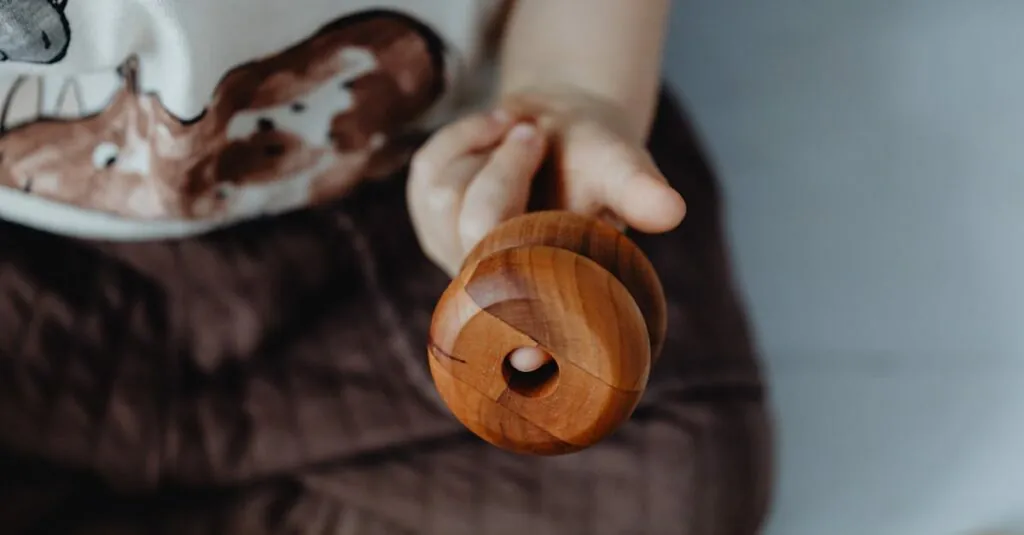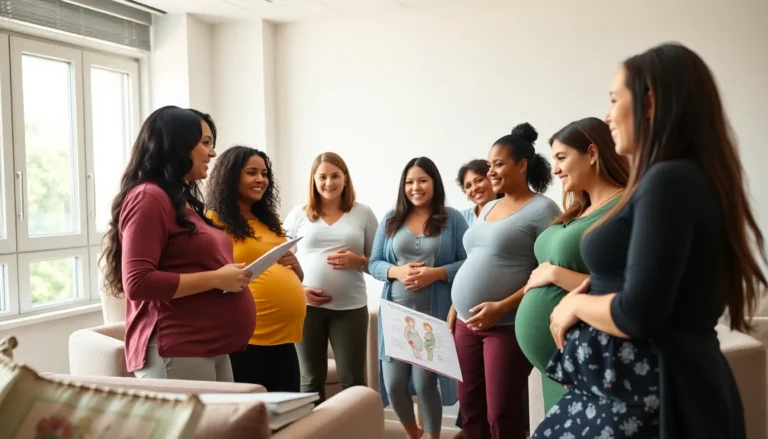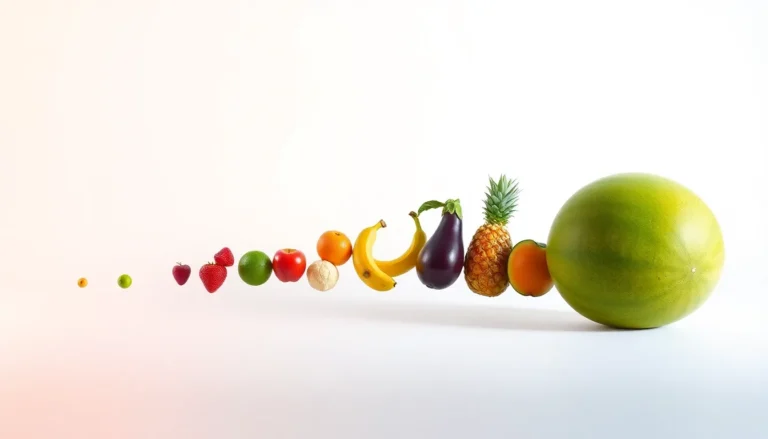In a world where plastic reigns supreme, the quest for sustainable Montessori materials feels like a superhero mission. Imagine a classroom filled with eco-friendly toys that inspire creativity while saving the planet—talk about a win-win! These materials not only nurture young minds but also teach little ones the importance of caring for their environment.
Gone are the days of guilt-ridden shopping sprees. With sustainable Montessori materials, parents and educators can embrace a guilt-free approach to learning. They’re not just toys; they’re tools for a brighter future. So, let’s dive into the world of sustainable options that make learning fun, engaging, and environmentally responsible. After all, who said saving the Earth couldn’t be a blast?
Table of Contents
ToggleOverview of Sustainable Montessori Materials
Sustainable Montessori materials play a crucial role in creating an eco-conscious learning environment. These materials often use organic, responsibly sourced components that minimize environmental impact. Wood, bamboo, and recycled materials are common choices. Many of these resources are durable, lasting through years of use, which reduces the need for constant replacement.
Parents appreciate that sustainable materials are non-toxic and safe for children. Products made from sustainable resources typically avoid harmful chemicals. This commitment ensures that children interact with materials that are healthy for them and the planet.
Educators increasingly recognize the potential of these materials to enhance learning experiences. Hands-on activities with sustainable resources encourage exploration and creativity. Montessori principles emphasize child-led discovery, making these materials effective tools for learning.
The production of sustainable Montessori materials also supports ethical labor practices. Many manufacturers prioritize fair labor, contributing to community development. This holistic approach aligns well with the values of social responsibility embedded in Montessori education.
Choosing sustainable materials fosters a lifelong appreciation for nature. Children engage with toys that reflect environmental stewardship, shaping their perspective on conservation. By introducing eco-friendly materials early, the foundation for responsible citizenship grows stronger.
Sustainable Montessori materials not only bolster educational objectives but also promote environmental responsibility. Adopting these resources offers an opportunity for parents and educators to model eco-friendly behavior. Incorporating sustainable approaches into learning environments highlights the importance of caring for the planet while nurturing children’s growth.
Importance of Sustainability in Montessori Education
Sustainability in Montessori education plays a crucial role in developing children’s awareness of environmental issues and responsible citizenship. Eco-friendly materials positively influence learning experiences and shape attitudes toward nature.
Environmental Impact
Using sustainable materials significantly reduces waste and pollution. Natural resources like wood and bamboo minimize reliance on plastics. Manufacturers often source these materials responsibly, ensuring ethical practices. Committed to environmental stewardship, educators and parents contribute to a healthier planet by choosing non-toxic and biodegradable options. Focusing on long-lasting resources further lowers the frequency of replacements, decreasing overall environmental impact. Sustainable choices promote a circular economy where reuse and recycling are prioritized, instilling a sense of responsibility in children.
Educational Benefits
Sustainable Montessori materials enhance learning opportunities while nurturing creativity. Hands-on experiences with eco-friendly toys facilitate exploration, encouraging children to engage deeply with their surroundings. Materials designed with safety and durability in mind are ideal for fostering autonomy and discovery. Incorporating these resources aligns with Montessori principles, allowing children to learn at their own pace. Increased awareness of sustainability also integrates seamlessly into lessons about conservation, helping students connect with the environment. By using sustainable materials, educators inspire a lifelong love for nature and a commitment to responsible practices.
Types of Sustainable Montessori Materials
Sustainable Montessori materials fall into various categories that promote eco-friendliness and enrich children’s learning experiences.
Natural Materials
Natural materials include items like wood, bamboo, and cotton. These resources often come from renewable sources that ensure minimal environmental impact. Non-toxic paints and finishes often coat wooden toys, making them safe for children. Utilizing these resources supports ethical harvesting practices, which protect ecosystems. Moreover, the tactile nature of natural materials encourages sensory exploration and creativity, aligning with Montessori principles of hands-on learning.
Recycled and Upcycled Materials
Recycled and upcycled materials also play a significant role in sustainability. Schools and parents frequently choose items made from repurposed plastics and fabrics, which help to reduce waste. These materials minimize the reliance on new resources while teaching children about recycling concepts. Creative activities utilizing these items foster imaginative play, promoting resourcefulness and adaptability. Selecting recycled materials not only enhances the educational value but also nurtures a sense of responsibility towards the environment.
Criteria for Choosing Sustainable Montessori Materials
Choosing sustainable Montessori materials requires careful consideration of several key factors. Parents and educators prioritize safety and quality to ensure children’s well-being while fostering an eco-friendly environment.
Safety and Non-Toxicity
Materials must be safe and free of harmful chemicals. Non-toxic resources protect children’s health, allowing them to explore freely without danger. Certifications like ASTM and CPSIA offer assurance of safety standards. Organic certifications provide additional peace of mind regarding the absence of harmful substances. Responsible sourcing and manufacturing processes also play a role in ensuring that these materials pose no risk to young users. Selecting materials with clear labeling helps in making informed choices.
Durability and Quality
Durability ranks high among the criteria for sustainable Montessori materials. Long-lasting items contribute to reducing waste through fewer replacements and resource consumption. High-quality materials withstand the rigors of daily use while maintaining their integrity. Investing in robust resources, such as hardwood or tightly woven fabrics, ensures longevity. Quality construction also enhances safe play, as sturdy items resist wear and tear. Parents and educators recognize that durable materials support hands-on learning experiences, leading to enriched educational outcomes. Choosing well-made materials ultimately cultivates a sustainable approach to early childhood education.
Examples of Sustainable Montessori Materials
Wooden toys represent a cornerstone of sustainable Montessori materials. Typically sourced from responsibly managed forests, these toys promote both tactile learning and environmental stewardship. Bamboo serves as another excellent choice due to its rapid growth and renewable nature. This material is strong yet lightweight, making it ideal for various educational tools.
Natural cotton fabrics also enhance sensory experiences for children. Non-toxic dyes and organic cultivation practices ensure these materials remain safe for little ones. Additionally, recycled or upcycled items play a significant role in sustainability. Using materials like recycled plastic or reclaimed wood teaches children about resourcefulness and the importance of reusing items.
Plant-based materials like cork can be included as well. Cork, being both biodegradable and renewable, offers versatility in crafting learning materials. Metal items made from recycled sources provide durability while minimizing the environmental footprint.
Montessori educators utilize materials that foster creative exploration. Building blocks made from sustainable wood help develop motor skills while allowing for imaginative play. Puzzles crafted from eco-friendly materials reinforce problem-solving abilities effectively.
Non-toxic art supplies deserve recognition too. Crayon sets made from natural ingredients provide safe options for young artists. Crafting materials derived from sustainably sourced products encourage creativity while respecting the environment.
Overall, these examples highlight the diverse range of sustainable Montessori materials available. Each choice reflects a commitment to ecological responsibility while supporting enriching learning experiences for children.
Sustainable Montessori materials play a vital role in shaping a child’s education while fostering a deep respect for the environment. By choosing eco-friendly resources, parents and educators not only enhance learning experiences but also contribute to a healthier planet. These materials offer durability and safety, ensuring that children engage in hands-on exploration without harmful chemicals.
Investing in sustainable options instills values of responsibility and conservation in young learners. As they interact with natural and recycled materials, children develop a lifelong appreciation for nature and an understanding of their impact on the world. Embracing sustainable Montessori materials is more than a choice; it’s a commitment to nurturing responsible citizens for the future.




